Text
Representation or Exploitation?
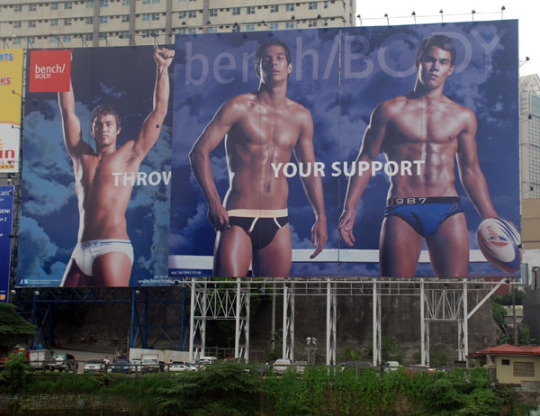
The listed articles all covered a series of sectoral representations in various print media. Reuben Cañente’s article entitled “Bench Underwear Ads and the Male Body,” covered the hypersexualization of men and the blatant visual erogenization of the Male body in Bench Underwear billboards and advertising. According to Cañente (2005), “Its display as a sexual cipher (in aid of commodity capitalism) does not fail to negate its ambiguity as for whom it is ultimately for: patriarchy or heterotopy; emergent homosexuality or hegemonic heterosexism.” In addition. while the emergence of such forms of advertising is a step towards the well-needed sexual liberation of society (especially that of the highly conservative Philippine society), the measures taken comes at varying expenses. Such expenses include that of its ties to capitalist production as well as hypermasculinity which also reinforces the culture of machismo in the country.
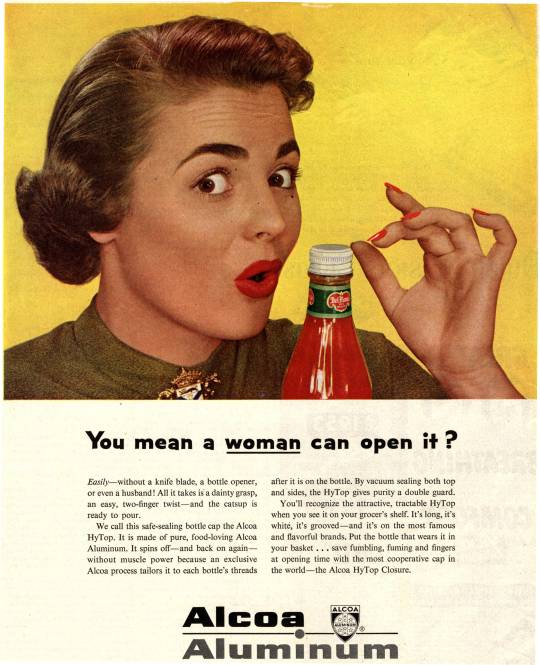
Meanwhile, Georgina Encanto’s article, “Women’s Magazines in English from 1920 to 1972: Instruments of American Hegemony” covers the use of Women’s Magazines to fortification American Hegemony and the subjugation of women under American colonial rule. Encanto (2004), elaborated on “how popular culture, which includes women’s magazines, colluded with the other ideological apparatuses (such as the family, the Church and the educational system) to mold the outlook and way of life of generations of Filipino women,” and emphasized on the detrimental effects of the aforementioned which includes the subtle cultural and ideological subjugation of Filipino Women, enabled by the lack of criticism and continued support, in the form of media consumption, for the ruling colonial capitalist.
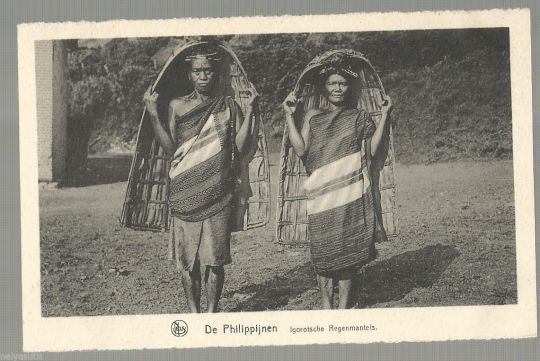
Lastly, Anna Christie Torres’ article, “Igorot representation in Cordillera Picture Postcards,” unboxes the socio-political implications of picture postcards and how it bore the colonial design of conquest in their imagery. Torres whilst referring to Igorot Representation in Picture Postards, added: “In the context of Philippine history, therefore, they document colonial and capitalist encounters that framed and continue to frame the subject within the boundaries of primitive and exotic display.” She expounds on how the thematic representation of the Ifugao impeded their development and further naturalized their “primitivism” through the use of colonial narratives. She adds up on how postcards continuously exploit cultural representation at the expense of reinforcing colonial narratives of indigenous communities.
All of the aforementioned articles tackled the socio-political impact of media representation for varying sectors. For men’s underwear advertisement, there is the employed erogenization of the male bodies as well as the enforcement of hypermasculinity. For women’s magazines, it serves as a tool for desensitizing and exposing women to colonial ideas which eventually led to the colonial subjugation of Filipino women. For Cordillera Picture Postcards, there is the exploitation of the Indigenous community of the Igorot which has boxed them within a primitive and exotic identity shaped by colonial narratives. Such issues are the manifestations of capitalist exploitation of sectoral representation. While there is no stopping capitalist giants from exploiting representation for profit, it is imperative that we educate consumers on media content. Croteau and Hoynes (2003), emphasized this and stated,”we must fully asses the potential impact of media content, we must look at meanings actual audiences attach to the media they read, watch, and listen to,” which sums up on how we should address the matters at hand.
References:
Cañete, R. (2005). Bench Underwear Ads and the Male Body. Plaridel 2, no. 2, 69-92.
Croteau, D. & Hoynes, W. (2003). Media society : industries, images, and audiences (3rd ed). Pine Forge Press, Thousand Oaks, Calif
Tiongson, N., & Umali, V. (2004). Women’s Magazines in English from 1920 to 1972: Instruments of American Hegemony. Plaridel, 1(1), 1–30.
Torres, Anna Christie V. (2006). Igorot Representation in Cordillera Postcards. Plaridel 3, no. 1, 123-146
0 notes
Text
Sign Seeker: A reaction paper
youtube
The short film “Sign Seeker” by Nestle Philippines peers into the innermost thoughts of Bien, portrayed by John Lloyd Cruz, as he searches for signs so he could court Kacey, portrayed by Solenn Heussaff. Bien is persuaded by his friend to pursue Kacey, so as he goes home, Bien states that if he wakes up earlier than his 6:03 A.M alarm, he will ask Kacey out. The next morning he wakes up a minute earlier than his alarm; he then claims that if they have strawberries for breakfast then he will pursue her, and as he leaves for work, his mother offers him strawberry yogurt as a snack. The film follows with a series of signs including: all green traffic lights, an overtaking dog, a horse and an elephant in his parking slot, a clown in the elevator and a sign on Kacey’s forehead that says “Let’s date (Date tayo)”. All of which are signs that have been met.
The aforementioned signs, despite being odd coincidences, serve as a justification for Bien that he is meant to ask out Kacey. He associates the signs to mean that, if they are met, such signs signify that he is supposed to ask Kacey out. Through Nic Lacy’s “Concept of Semiotics,” such signs are meant to hold varying meanings depending on the context. For me, the so-called signs that Bien lists out serve as signifiers, while such signs have a signified and associated meaning that Bien imposed which is such signifiers entail that they are go-signals to pursue Kacey.
Most times, interpretative meanings of signs differ from others due to the multiple contexts that people are aware of. People associate different meanings to different things due to diversity in education, culture, and self-perception.
References: Lacey, Nick. (1998) “Semiotics.” Image and Representation: Key Concepts in Media Studies. New York: St. Martin’s Press, Inc., pp.56-75.
0 notes
Text
Gone Girl: Gaslight, Gatekeep, Girlboss
Gone Girl is a thriller novel written by Gillian Flynn. It was published under the Crown Publishing Group back in June 2012. Gone Girl entered the New York Times bestseller list the week it was published, rising to No 1 the following week and selling around two million copies in the first year. Gone Girl was named one of the best books of the year by People Magazine and Janet Maslin at the New York Times. Nominated for both the Edgar Award and the Anthony Award for Best Novel, Flynn wrote the screenplay for David Fincher’s 2014 adaptation of Gone Girl for the big screen, starring Ben Affleck and Rosamund Pike.
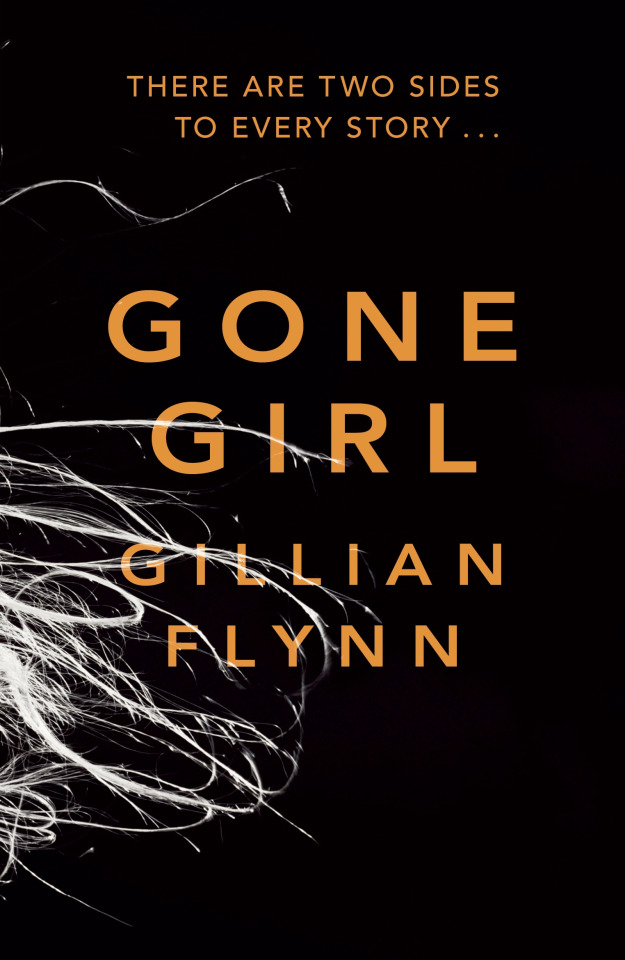
The title of the book, “Gone Girl,” very much encompasses the overall force driving the plot of the novel, Amy Dunne. The novel revolves around Amy Dunne, the literal “Gone Girl,” as she disappears from their subpar suburban home in Missouri. Furthermore, the title could also refer to the disappearance of Amy’s fabricated identity, the loss of Amy’s “cool girl” façade that she has built upon knowing Nick. It appertains that as Amy literally disappeared, upon learning more about his wife, Nick’s image and perception about Amy changed. Gone was the “cool girl” Amy and in came “psycho bitch” Amy; murderer and mastermind.
The novel circulated around the complexities of Amy and Nick Dunne’s marriage, which took a sharp turn as Amy went missing from their subpar suburban home. On the second half of the book, it is revealed that the disappearance was only a ruse staged by Amy in an attempt to break free from their marriage.
Gone Girl still remains to be an enigma for it’s readers. It’s identity as a novel is often debated upon. In an interview with the Hollywood reporter, Flynn states that she did not write the book with the intent of making a purposeful statement, but rather she wanted to “play with how far can you push a female antihero, all the while tackling gender roles within a marriage”. While Flynn is successful in building an antihero, femme fatale of sorts, Amy Dunne leaves much to be desired.
Gone Girl has always been the subject of controversy, with critics touting it as the work of a misogynist at play, giving out a poor portrayal of women and showing them in a terrible light. Others, on the other hand, praise Flynn for giving out a unique character that delves deeper into showing the capabilities of a woman. Gone Girl has broken boundaries and produced a new breed of female fictional characters that continuously entice the masses.
I, for one, am very conflicted whilst reading the book. Much praise has been given to Flynn for showing the ugly side of women, even prior to writing Gone Girl. In her debut novel, Sharp Objects, Camille Preaker is introduced. Camille is a journalist for a small-time newspaper who tends to carve words on her skin, when agitated. In Flynn’s second novel, Libby Day is introduced. The sole survivor of a massacre, born during the era of Satanic Ritual abuse.
Flynn has continuously written complex female characters with each having their own set of flaws, the characterization of Amy Dunne, however, is one that has left me unsettled. Yes, Flynn is successful in writing a female character that makes your skin crawl and yet, she leaves you divided as there are reasons behind her actions. While Amy Dunne is a great characterization of a female antihero, it feels like a character that reinforces the crazy woman stereotype that is often harmful for women, In addition, Amy Dunne’s methods, such as framing men by making fake rape allegations (which she has done twice) leaves a sour taste due to the large number of women that have suffered backlash after having their reports of rape be dismissed in favor of men; it comes out as misandrist rather than misogynist at times.

Moreover, Amy Dunne may be a riveting character to read, but I feel like Flynn falls short in humanizing her. Yes, Amy has long suffered from marital problems and the crushing weight of parental pressure; but her motives fail to justify her actions to the point where it feels like she is grasping for reasons to sympathize with Amy, and yet you feel none. It romanticizes marital gaslighting and it portrays Amy as a girlboss-esque femme fatale which feels like a troublesome character to enforce such stereotypes to. While I do not agree, that the book is flat out misogynistic, I do feel like it reinforces harmful female stereotypes.
Gillian Flynn has been accused of being a misogynist a multitude of times, because of her “misogynistic caricatures” (Amy Dunne, being one) and writing in a way that encompasses a deep animosity towards women, however, Flynn identifies herself as a feminist.
In a way, she admits that her way of portraying women is rather unconventional, but her goal is not to give out the typical cookie cutter image of women, but as hardened human beings who have undergone tragic experiences. Asking for stereotypical female characters doesn’t broaden the horizon for feminism. However, showing women in a different light does. In response to misogynistic claims, Flynn responds in an interview: "To me, that puts a very, very small window on what feminism is," she further elaborates. "Is it really only girl power, and you-go-girl, and empower yourself, and be the best you can be? For me, it's also the ability to have women who are bad characters … the one thing that really frustrates me is this idea that women are innately good, innately nurturing. In literature, they can be dismissably bad – trampy, vampy, bitchy types – but there's still a big pushback against the idea that women can be just pragmatically evil, bad and selfish ... I don't write psycho bitches. The psycho bitch is just crazy – she has no motive, and so she's a dismissible person because of her psycho-bitchiness."

Despite the book being released in less than a decade ago, there has still been talks and much debate on the meaning and intent of the book. It is important to to leave space for other interpretations, as it not only provides fruitful discourse; but it also gives you a look on others’ headspace and gain an idea on how they think and reflect. Giving room for freedom of interpretation allows for diverse flow of ideas, it further develops how we think and perceive different concepts. It allows us to view the world in a different context.
References:
Flynn, Gillian (2012). Gone Girl. New York, New York: Crown
Haupt, Jennifer (19 November 2012). "Best-selling Author Gillian Flynn: Gone Girl". Psychology Today.
Rousseau, Caryn (22 June 2012). "Flynn's 'Gone Girl' poised to be summer thriller". Huffington Post.
Paul, Steve (10 February 2014). “Kansas City native Gillian Flynn emerges as a literary force with her twisted mystery 'Gone Girl'. The Kansas City Star
Burkeman, Oliver (May 1, 2013). "Gillian Flynn on her bestseller Gone Girl and accusations of misogyny". The Guardian.
4 notes
·
View notes
Text
Filipino Representation in Media
0 notes
Text
Selfies: Representation or Manipulation?
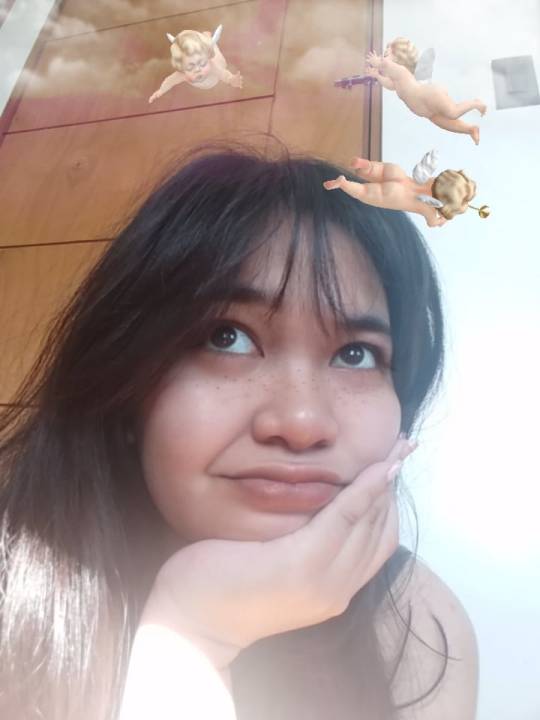
Selfies are self-taken portraits taken through the use of a camera. Albeit self-portraits have been existing for decades, it was only through the previous decade that self-taken pictures were given a name. In the year 2012, the term “Selfie” became commonplace and placed ninth in TIME’s Top 10 Buzzwords of 2012.
Selfies are an in-the-moment capture of a person and while pictures say a thousand words, selfies are barely a reflection of my or anyone’s being. As Selfies are often publicized on social media, the authenticity of a person’s self is up for debate. For me, selfies are limited to what a person sees upfront, it does not offer much context on who a person really is. I could take a picture of myself in a room whilst smiling and those who encounter my selfie will not see anything past a smiling girl as I offer little to no context on how I behave or who I really am. Rather than a thorough reflection, selfies are merely projections of an idealized self, a self that we want people to see. Hall et. al (2013) emphasized that “...even in the case of visual language, where the relationship between the concept and the sign seems fairly straightforward, the matter is far from simple.” (p. 6)
For selfies, I often make use of filters to make myself more appealing. Publicizing pictures on social media means putting oneself under the scrutiny of the online audience. I opt to use filters to make myself more attractive as an attempt to conform to the beauty standards and alleviate the pressure of being under the watchful eye of the public. This, however, is also a manifestation of the pliable nature of Selfie which could easily be used to manipulate others. For me, Selfies, offer only a surface-level representation of myself. While it allows a glimpse, into a facet of my personality such as how I present myself and what I do in my spare time, people do not get a full look into who I really am. The capricious nature of selfies does not make for a fair representation of the self, it is heavily limited by what audiences can see.
References: Hall, S., Griffith, E. D., & Hall, S. (2013). In The work of representation (pp. 1–26). essay, SAGE Publication. Steinmetz, K. (2012, December 4). Top 10 Buzzwords of 2012. Time. https://newsfeed.time.com/2012/12/04/top-10-news-lists/slide/selfie/.
0 notes